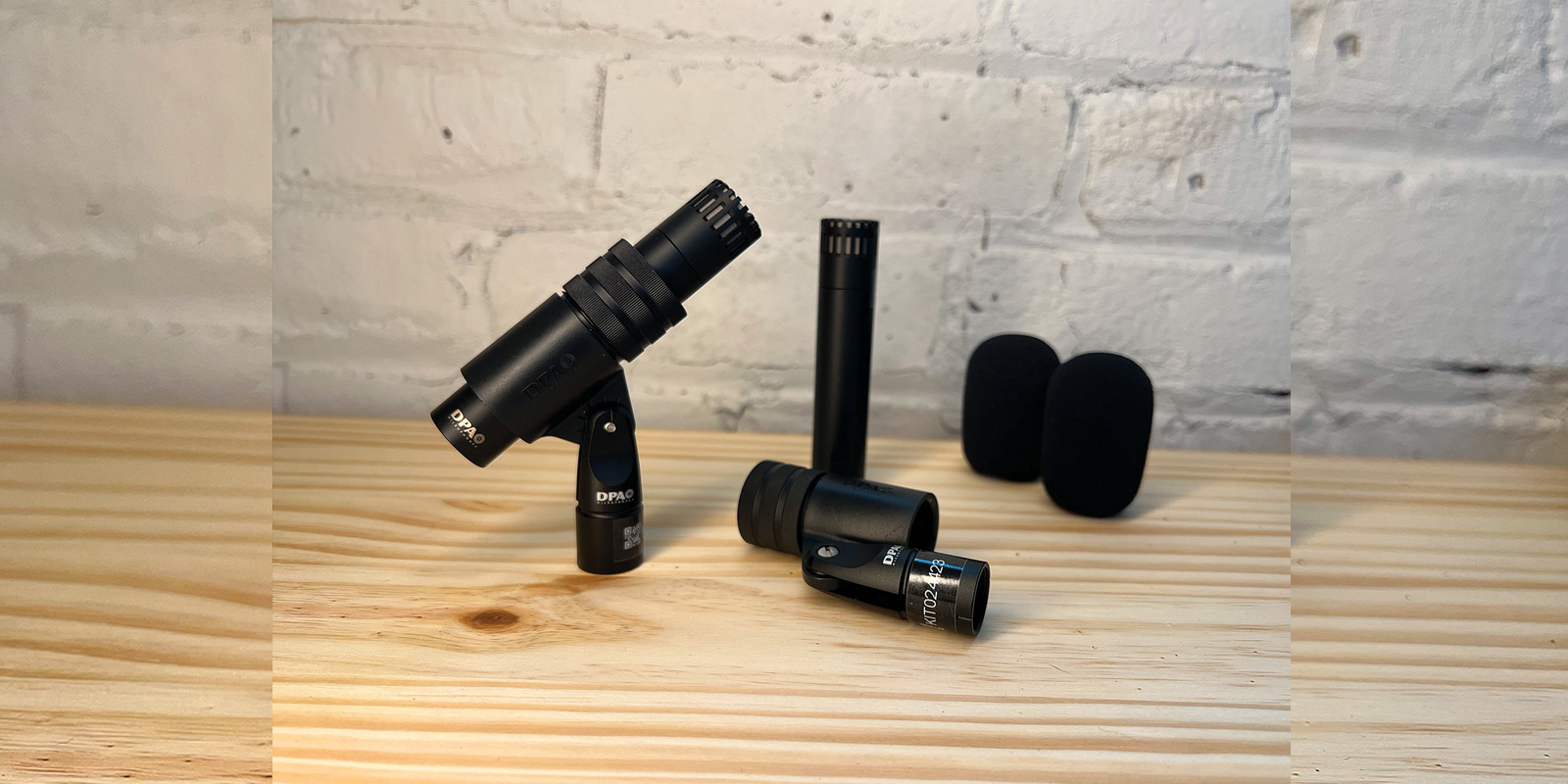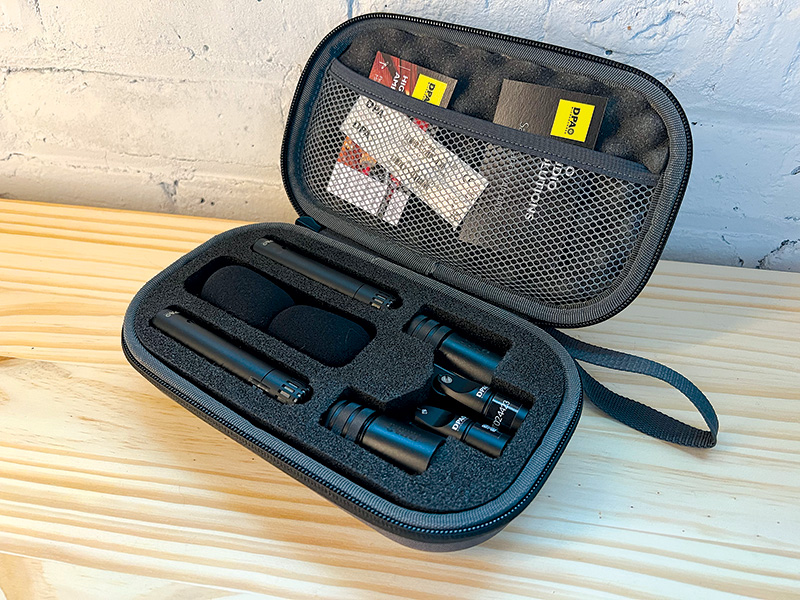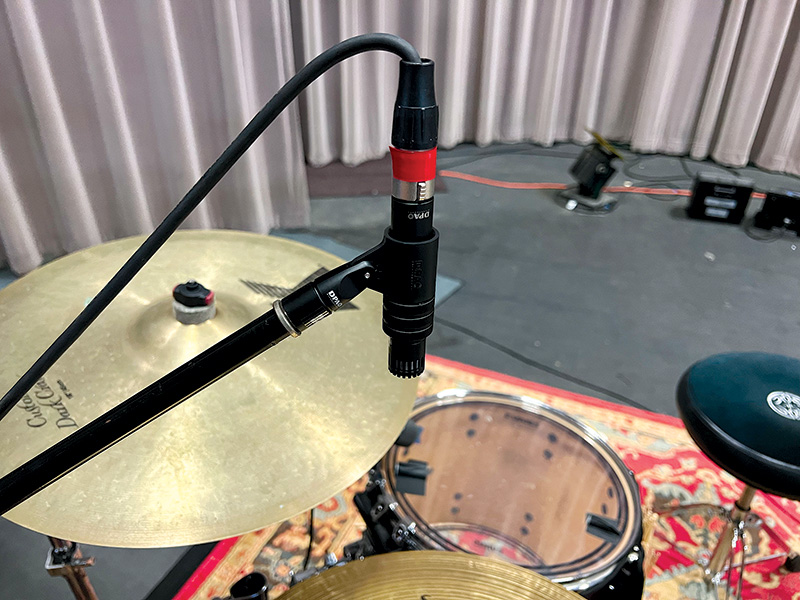Wonderful width and detail on stage and in the studio
Review by Paul Vnuk Jr.
The 2015 is the latest pencil condenser offering from DPA, released concurrently with the similarly styled 2012. When one of the world’s premier small diaphragm condenser designers releases a new model (or two), count me as curious.
From Studio to the Stage
The overarching theme of the 2015 and 2012 is that they are designed with an affordable “ear” toward use on stage, yet they are equally suited to your studio needs. Both mics are visually similar, and while we will be looking at the cardioid patterned 2012 in an upcoming issue, this month, we focus on the wide cardioid 2015.
Past Featured Reviews
- Review: Chandler TG Microphone Type L
- July 2024: Strymon BigSky MX
- Review: Grace Design ROXi & REX
- Review: Genelec 8381A SAM™ Adaptive Point Source Main Monitor
- June 2024: Amphion One25A
- Review: Eventide Blackhole and MicroPitch Immersive
- May 2024: Ohma World Ribbon Microphone
- April 2024: Ableton Live 12
- March 2024: JZ Microphones BT202
- February 2024: JH Audio Pearl + Ruby
- February 2024: Antares Vocal Reverb by Auto-Tune
- January 2024: Ableton Push 3
Meet the 2015
The 2015 is housed in a simple black, 3.75″ x .75″ body with no pads, switches or onboard filters. The mic is a fixed capsule design, purpose-built to be extra rugged to withstand the rigors of stage use.
The 2015 is a wide cardioid mic that lives between a more unidirectional cardioid design and an omnidirectional mic—think wide, yet still focused.
The mic is available singularly or, better yet, in matched pairs with a +/- 1.5dB sensitivity tolerance. Each mic comes with a UA0961 screw-style compression mic holder, a foam windscreen and a cloth zipper bag, while stereo pairs swap the bag for a DPA hard-shell, nylon zipper case.
Purpose
The 2015 is billed as a “Wide cardioid overhead microphone for ambient pick up of a drum kit or other instrument groups.” Think grand piano, horns (as a section), mallet instruments, drum kits, string trios, small vocal ensembles and the like. This is an excellent place to point out that, in a live situation, ambient pick-up does not necessarily mean at a far distance. A mic such as this means you can get closer to said sources while maintaining the sense of ambiance around them.
Sound
Sonically this mic is in the ultra-clean, clear and detailed category. The mic is darn near flat from 20 Hz up to 3 kHz, where there is a broad 4dB peak centered at 9 kHz, which then rolls roundly off around 18 kHz, hitting 3dB down at about 20 kHz. This helps maintain clarity but keeps the mic from getting harsh or “tizzy.” Overall, the 2015 exhibits detail and dimension with full natural tonality in the mids and lows.
The 2015 has a polite proximity effect that disperses at 2″ and beyond. On the side, the 2015 is what I might call almost omni, and yet there is still an off-axis roll-off where the sound drops gently in level, with a rounded tonality that downplays the high end. This aids in giving the mic a sense of directionality.
In Use
I was sent a pair of 2015 mics, and trust me, while this mic will have its single-source uses from time to time, you will want a pair. In the studio, my first use of the 2015 was as a mono mic on acoustic guitar about 6″ off the 12-fret. I was impressed with the clear jangle of the strings balanced with a natural capture of the body. Next, I decided to add a second 2015 and capture the acoustic guitar in stereo. As I was after a balanced stereo capture of the guitar, I put both mics in a capsule-to-capsule X-Y set up about 2′ back. This again offered an excellent, clear, natural and spatial representation of the guitar. Finally, I decided to put the first mic back on the 12th fret with the second mic aimed at the body, just off the sound hole, with the intention of blending the mics in mono. Again, it was a nice open sound, and while I typically mix LCR, I enjoyed adding just a hint of 20–30% stereo width for added dimension.
Alone or in pairs, the 2015 makes a great shaker, tambourine and clave mic as said sources nicely hang in space. When using two mics, you can place your source physically in the stereo field while tracking rather than post-panning.
The 2015 Loves Drums
The bulk of my use of the 2015 was over a month-long period as a pair of spaced overheads on a drum set in a live/streaming worship setup in an 1,800-seat sanctuary, along with dynamic close mics on toms, snare and the kick. While the close mics did the heavy lifting of the low and mid-forward tones, the pair of 2015 mics did a great job filling in the detailed image of the cymbals and the kit as a whole.
Here is where the above statement about ambiance and distance comes into play. For live, I find it’s best to get your overheads as close to the cymbals as possible while trying to maintain an illusion of the width and depth of the kit. With the 2015, there is no illusion; these mics allow you to get close—even 1.5′ off the ride and crash cymbals, and yet you will still hear a full, clear representation of the snare, toms and hi-hats. This close proximity makes the kit sound quite detailed and ‘real’ with minimal post-EQ shaping.
Spoiler alert: a pair of 2015 mics is reported to be included in an upcoming DPA drum mic kit along with a 4055 kick drum mic (a lovely mic), a 2012 for snare and 4099 mics for toms.
A final drum story was that after having to take the 2015 mics away (to do some final studio tests), the drum kit sounded quite dull with our regular (sadly budget) overheads. This was especially true when a drummer brought in a dark-toned, super dry ride and it quickly got lost in the mix. So much so that for the next date, two days later, I returned the 2015 to overhead duties much to the drummer’s, music director’s and my joy—the dark, dry ride now cut through wonderfully.
Conclusions
While the 2015 is live-focused and less expensive than many other similar DPA offerings, a pair comes in at less than a single DPA 4011. This is no entry-level, budget DPA mic. On the contrary, the classic dimensional DPA clarity just got a lot more robust and affordable.
Price: $849; $1,595 Pair
More From: dpamicrophones.com




